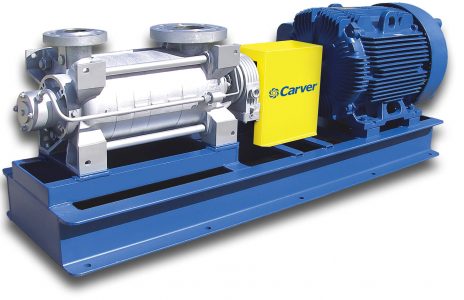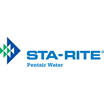
October 4th, 2018
Callaghan Pump manufactures its own variable speed domestic water pump systems for New York City. They also build, program, and test variable speed tank fill systems as well. We use the exact same construction for our variable speed domestic water pumps as we do for our variable speed tank filled pumps. One might ask why we use a variable speed control when filling a tank. Isn’t that normally a simple on/off control system? The answer is yes and no.
There is a new code in New York City that says any roof tank that is exposed to the elements that has water in it for domestic water or fire protection needs to be monitored heated at some points during the year. Concern arises if the heating source ever breaks for some reason. You need to monitor the temperature of the water every day that the outside temperature is 40 degrees or below. Using a variable speed system facilitates these needs because in tying in a transducer it can monitor levels and temperatures for the tank (one transducer handles all levels – low level, high level, pump 1 run, pump 2 run- meaning lead pump, lag pump, high level). Built into the transducer is a temperature sensor which not only allows you to monitor the daily temperature but also allows you to track the history. It gives as many data points as you would like as it is able to measure the temperature every minute, every hour, or every six hours — however the user want to set it up.
The Callaghan Pump variable speed tank filled system has another benefit. If it is a large system, 15- 100 stories, when the tank is filled, the old constant speed systems stop quickly and can experience a very large “hammer” on the check valve. The old fix was to put in a tank fill valve which starts the pump against a closed valve, then slowly opens the valve, fills the tank and, when the tank is filled, slowly closes the valve, and shuts off the pump. All of those steps are eliminated with the Callaghan Pump Variable Speed tank filled system. You can digitally determine, by standing next to the pump, the speed at which pump slows down and the check valve stops/closes. For example, if you determine that happens at 43 hertz you can slow the pump down to 46 hertz and then very slowly slow the pump down little by little until the check valve gently touches and then you can continue to slow the pump down at a more rapid rate of speed. To do this we use the Yaskawa iQ1000 drive – you simply switch the drive from reading psi to reading of feet of head or water in the tank. It is that simple.
john@callaghanpump.com,
eileen@callaghanpump.com,
dan@callaghanpump.com,
sales@callaghanpump.com,
service@callaghanpump.com












